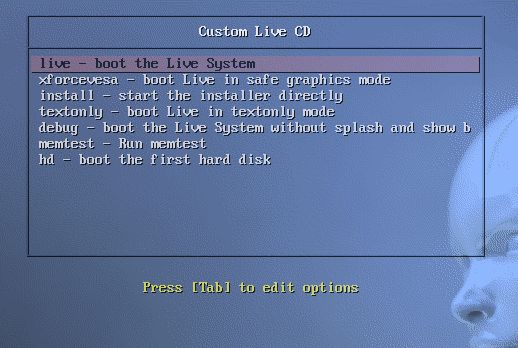- arxiv论文爬虫
plasma-deeplearning
pycharmar爬虫
文章目录readmeArxivInterestingPapersCrawlerDescription:Thetimerangeofthepaperdownloading:Themodeofthedownloading:Therootofthedownloading:Thedomainofthedownloading:Thecustomizedkeywords:Thecustomizedkeywor
- Java微服务的注册中心Nacos
铁锤学代码
微服务java微服务开发语言
文章目录Nacos的主要作用Nacos实现动态配置更新的技术Nacos实现CAPNacos实现CAP原理Nacos使用Distro和Raft分别干什么用?ZAB与Raft的区别Nacos的主要作用配置中心:可以将微服务中的一些配置信息放到Nacos进行统一管理,也可以通过Nacos实现动态配置管理。也可以将不同环境的配置放在不同的Namespace下的group下,实现动态选择配置发布部署。服务注
- CellWriteHandler is an interface in EasyExcel, a popular Java library for reading and writing Excel
hshpy
excel
CellWriteHandlerisaninterfaceinEasyExcel,apopularJavalibraryforreadingandwritingExcelfiles.ItisusedtocustomizehowdataiswrittentocellsduringtheExcelexportprocess.PurposeItallowsdeveloperstomodifycellva
- Python3.13.0安装教程
孙华贵
python开发语言
这张图片显示的是Python3.13.0(64位)的安装界面的第一个界面。在这个界面上,用户可以选择安装Python的默认设置,或者自定义安装选项。-**InstallNow**:选择这个选项会使用默认设置安装Python,包括安装IDE(集成开发环境)、pip(Python包管理工具)和文档,并创建快捷方式和文件关联。-**Customize**:选择这个选项可以自定义安装,例如选择安装位置和功
- centos 7.x无法安装kong gateway 3.9X的解决方案
张声录1
centoskonggateway
一、问题背景笔者想在centos7.9上通过yum的方式安装konggateway3.9X,安装官网安装指导curl-1sLf"https://packages.konghq.com/public/gateway-39/config.rpm.txt?distro=el&codename=$(rpm--eval'%{rhel}')"|sudotee/etc/yum.repos.d/kong-gate
- win7系统如何安装python_python安装教程详解 python下载安装教程步骤_win7怎么安装python
程序员狂喜
2024年程序员学习pythonlinux开发语言
官网下载需要根据电脑系统选择下载:3.确定电脑系统属性,此处我们以win10的64位操作系统为例(Python如果为了兼容性,建议安装32位版本)4.下载之后开始安装python双击下载的安装包python-3.6.3.exe注意要勾选:AddPython3.6toPATH(勾选后会自动配置系统环境)点击Customizeinstallation进入一步(方便我们自定义安装路径)(下节会为大家介绍
- Spring Boot Actuator 集成 Micrometer(官网文档解读)
找了一圈尾巴
Spring架构学习文档解读系列springbootjava
目录概述实现Observation可观测性Observation功能核心类ObservationPredicateGlobalObservationConventionObservationFilterObservationHandlerObservationRegistryCustomizerObservation相关注解多线程处理机制配置上下文传播常用标签配置OpenTelemetry支持关闭
- Customize ringtone on your iPhone
fareast_mzh
iphoneios
Tousean.mp3or.wavfileasacustomringtoneonyouriPhone,followthesesteps:Option1:UsingGarageBand(iPhoneOnly,Free)Thismethoddoesn’trequireacomputerandcanhandle.mp3or.wavfiles.DownloadtheSoundFile:Visitthesi
- 使用ChatGPT进行模仿人类写作的指令,让你的文章去除AI味道
AI逍遥子
人工智能chatgpt
使用ChatGPT进行模仿人类写作的指令,让你的文章去除AI味道下面是详细的指令,复制就可以使用了:Youarea"GPT"–aversionofChatGPTthathasbeencustomizedforaspecificusecase.GPTsusecustominstructions,capabilities,anddatatooptimizeChatGPTforamorenarrowse
- 阿里云k8s扩展节点最大pod数量(两种方式)
想见感
k8slinuxk8s中间件
一、亲测可用vim/etc/systemd/system/kubelet.service.d/10-kubeadm.conf[Service]EnvironmentFile=-/etc/kubernetes/kubelet-customized-args.confEnvironment="KUBELET_KUBECONFIG_ARGS=--bootstrap-kubeconfig=/etc/kub
- create-react-app集成antd-mobile,customize-cra扩展配置addLessLoader,lessOptions,fixBabelImports,实现主题定制和按需加载
凉菜凉凉
JavaScriptReact#+技术分享reactjavascriptreactjswebpackless
项目目标是做一款小程序实现房间预订、在线点单、会员卡券积分管理的功能,并且同步实现一套H5版。没错,最佳实现方案是uni-app或者taro。听之前同事说uni-app坑多(高手勿喷,本人小白,没学过uni,不了解,仅仅听别人说,勿骂),另外最近taro比较活跃,并且可以使用react语法开发(也支持了最新的vue3),果断放弃uni-app,决定使用taro做个demo尝试了一下觉得还不错,只可
- WordPress禁止后台自定义功能
podoor
WordPress技术wordpress
wordpress后台可以彻底禁止主题的自定义菜单功能,下面这段代码添加到functions.php文件中,后台外观菜单中的”自定义”就会消失不见了。add_filter('map_meta_cap',function($caps,$cap){if($cap=='customize'){return['do_not_allow'];}return$caps;},10,2);小代码解决大问题,你学废
- Ant Design Table、List 等自定义全局组件的 Empty 样式
IT姑凉
用的是3.x版本的https://3x.ant.design/components/empty-cn/List数据、Table数据为空,会默认显示个暂无数据,想要自定义样式,发现如果不仔细看都找不到在哪写哈哈import{ConfigProvider,Empty,Table,List,}from'antd';constcustomizeRenderEmpty=()=>(暂无评论哦,快来评论一下吧!
- MariaDB CentOS 安装的时候如何确定 Repo 地址
HoneyMoose
MariaDB
在CentOS安装MariaDB数据库的时候,yum安装显示没有匹配的安装包。我们应该如何配置能够让安装成功呢?你需要在你的CentOS中编辑/etc/yum.repos.d/MariaDB.repo文件。这个文件的内容,你可以访问:https://downloads.mariadb.org/mariadb/repositories/#distro=CentOS&mirror=supportex找
- ROS2 学习笔记13:创建 ROS2 包
斯丢彼得大帝
ROS2学习笔记机器人自动驾驶
ROS2学习笔记13:创建ROS2包Background背景1什么是ROS2包2ROS2包的组成3工作空间的包Prerequisites前提Tasks任务1Createapackage2Buildapackage3Sourcethesetupfile4Usethepackage5Examinepackagecontents6Customizepackage.xmlSummary总结Nextstep
- Fiddler使用教程(三):抓取websocket请求
tianshuiyimo
软件测试常用工具fiddler
在Fiddler菜单Rules>CustomizeRules中添加Handlers类的OnWebSocketMessage方法在classHandler中添加代码staticfunctionOnWebSocketMessage(oMsg:WebSocketMessage){//LogMessagetotheLOGtabFiddlerApplication.Log.LogString(oMsg.To
- 【ant-design-vue】a-input、a-number、a-date在disabled时样式修改
Chx.zhang
vue.js前端ant-design
a-input、a-number、a-date在disabled时,颜色比较深,不宜查看。由于之前项目之前在对输入框禁用,不宜查看,故做此修改并记录。只是有一个疑问,为什么之气那项目的查看不用readOnly???不香吗?????/*覆盖ant-design-vue样式**/.ant-select-disabled.ant-select:not(.ant-select-customize-inpu
- iOS自定义带两个圆角的UILabel
雪山飞狐_91ae
这里要实现的是带有两个圆角的自定义的UIlabel两个圆角的UIlabel.png主要思路是利用贝塞尔曲线绘制masklayer的轨迹。下面直接看代码:#import"CustomizeLabel.h"@interfaceCustomizeLabel()@property(nonatomic,strong)CAShapeLayer*maskLayer;@property(nonatomic,str
- WinForms Reports with Themes
SEO-狼术
DelphiCracknet开发语言
WinFormsReportswithThemesReportingcontrolswiththemingsupporttransformreportsintovisuallyappealingdocumentsthatreinforceyourbrandidentity.Themesupportinreportingcontrolsallowsyoutocustomizethevisualapp
- QSignalMapper 使用方法 参见QSignalMapper中使用文档
哈哈王戈多
TestServiceDlg1::TestServiceDlg1(constQStringList&texts,QWidget*parent):QWidget(parent){this->setObjectName(QObject::tr("TestServiceDlg1"));m_pageRes.setupUi(this);//!Ui::pageCustomizePopular是UI界面对象si
- python colorbar刻度,python matplotlib colorbar设置刻度格式或定位器更改刻度标签
孔祥康
pythoncolorbar刻度
users,Iwanttocustomizetheticksonacolorbar.However,Ifoundthefollowingstrangebehavior.Itrytochangethetickformatortothedefaultformator(Ithoughtthisshouldchangenothingatall)butIendupwithdifferentlabels.Do
- 在Windows QT下使用ZeroMQ
weixin_30578677
c/c++嵌入式
zeroMQ作为一个嵌入式消息队列系统,以其轻便灵活的使用方式,极为适合应用程序分布式通讯处理,或者是一种有效的代替常规saocket通讯的方法。1)下载地址:http://zeromq.org/distro:microsoft-windows2)按照说明。获取相应的版本,并安装。3)安装目录中,include文件集中下有两个包含头文件:zmq.hzmq.utils3)库文件,根据操作系统选择相应
- Android:自定义控件
偶是不器
Androidandroid自定义组件笔记
3.16自定义控件1.自定义VIEW组件创建CustomizeView,继承View。重写onDraw方法,通过onDraw方法绘制我们自定义的图像、位图、路径等。示例://自定义绘制ViewpublicclassCutomizeViewextendsView{//构造方法publicCutomizeView(Contextcontext){super(context);}//构造方法,这个构造必
- python安装教程
_鱼与渔_
安装步骤:安装前先关闭杀毒软件和360卫士,注意安装路径不能有中文,安装包路径也不要有中文。试装系统:win1064bit安装版本:python3.7.01.解压安装包(注意解压的路径不要有中文)。2.以管理员身份运行安装程序。3.选择“customizeinstallation”,记得勾选“Addpython3.7toPATH”。4.点击“Next”。5.选择安装路径,记得不要有中文,然后点击“
- 关于 SAP Spartacus low level Component的customization
JerryWang_汪子熙
一些讨论链接:https://stackoverflow.com/questions/62157099/how-to-customize-lower-level-components-in-spartacus/需求I'mtryingtocustomizetheProductListItemComponentandtheProductGridItemComponentinordertoaddsome
- 基于Skywalking开发分布式监控(二)
zhyuli
skywalking分布式
续上篇,上一篇主要是讲了为啥选skywalking,以及怎么有针对性改造SWAgent,现在我们继续看看如何构建自定义Trace跟踪链要对SWAgent插件做适当剪裁,原来包括customize插件在内SW8.9有100多个插件,如果没有作用也就罢了,但是有些插件会产生大量trace和span数据,用处不大,但是会干扰需要聚焦的数据,例如一次最多查10000个trace,但有可能绝大部分都不是用户
- 在Windows中安装Rust到自定义路径
吾等斩去红尘时
设置环境变量系统属性>环境变量>新建RUSTUP_HOME=d:\snap\rust\rustupCARGO_HOME=d:\snap\rust\cargo下载程序https://www.rust-lang.org/zh-CN/learn/get-started安装程序需要提前安装好GCC并根据提示安装Rust程序rustup-init.exe选择Y>选择2)Customizeinstallati
- 第二周作业
如是我闻_17e6
第二周1、显示/etc目录下,以非字母开头,后面跟了一个字母以及其它任意长度任意字符的文件或目录2、复制/etc目录下所有以p开头,以非数字结尾的文件或目录到/tmp/mytest1目录中。3、将/etc/issue文件中的内容转换为大写后保存至/tmp/issue.out文件中4、请总结描述用户和组管理类命令的使用方法并完成以下练习:(1)、创建组distro,其GID为2019;(2)、创建用
- Android Google 开机向导定制 setup wizard
面向未来_
android
Android开机向导定制采用rro_overlays机制来定制开机向导,定制文件如下:GmsSampleIntegrationOverlay$tree.├──Android.bp├──AndroidManifest.xml└──res└──raw├──wizard_script_common_flow.xml├──wizard_script_customize_flow.xml└──wizard
- 第二天python3.8下载与安装
request_d6de
1.操作系统:Windows764bitPython版本:3.8下载地址:https://www.python.org/downloads/release/python-380/,选择下方的Windowsx86-64executableinstaller2.安装步骤:双击安装文件python-3.8.0-amd64.exe勾选下方“AddPython3.8toPATH”,并选择“Customize
- Java常用排序算法/程序员必须掌握的8大排序算法
cugfy
java
分类:
1)插入排序(直接插入排序、希尔排序)
2)交换排序(冒泡排序、快速排序)
3)选择排序(直接选择排序、堆排序)
4)归并排序
5)分配排序(基数排序)
所需辅助空间最多:归并排序
所需辅助空间最少:堆排序
平均速度最快:快速排序
不稳定:快速排序,希尔排序,堆排序。
先来看看8种排序之间的关系:
1.直接插入排序
(1
- 【Spark102】Spark存储模块BlockManager剖析
bit1129
manager
Spark围绕着BlockManager构建了存储模块,包括RDD,Shuffle,Broadcast的存储都使用了BlockManager。而BlockManager在实现上是一个针对每个应用的Master/Executor结构,即Driver上BlockManager充当了Master角色,而各个Slave上(具体到应用范围,就是Executor)的BlockManager充当了Slave角色
- linux 查看端口被占用情况详解
daizj
linux端口占用netstatlsof
经常在启动一个程序会碰到端口被占用,这里讲一下怎么查看端口是否被占用,及哪个程序占用,怎么Kill掉已占用端口的程序
1、lsof -i:port
port为端口号
[root@slave /data/spark-1.4.0-bin-cdh4]# lsof -i:8080
COMMAND PID USER FD TY
- Hosts文件使用
周凡杨
hostslocahost
一切都要从localhost说起,经常在tomcat容器起动后,访问页面时输入http://localhost:8088/index.jsp,大家都知道localhost代表本机地址,如果本机IP是10.10.134.21,那就相当于http://10.10.134.21:8088/index.jsp,有时候也会看到http: 127.0.0.1:
- java excel工具
g21121
Java excel
直接上代码,一看就懂,利用的是jxl:
import java.io.File;
import java.io.IOException;
import jxl.Cell;
import jxl.Sheet;
import jxl.Workbook;
import jxl.read.biff.BiffException;
import jxl.write.Label;
import
- web报表工具finereport常用函数的用法总结(数组函数)
老A不折腾
finereportweb报表函数总结
ADD2ARRAY
ADDARRAY(array,insertArray, start):在数组第start个位置插入insertArray中的所有元素,再返回该数组。
示例:
ADDARRAY([3,4, 1, 5, 7], [23, 43, 22], 3)返回[3, 4, 23, 43, 22, 1, 5, 7].
ADDARRAY([3,4, 1, 5, 7], "测试&q
- 游戏服务器网络带宽负载计算
墙头上一根草
服务器
家庭所安装的4M,8M宽带。其中M是指,Mbits/S
其中要提前说明的是:
8bits = 1Byte
即8位等于1字节。我们硬盘大小50G。意思是50*1024M字节,约为 50000多字节。但是网宽是以“位”为单位的,所以,8Mbits就是1M字节。是容积体积的单位。
8Mbits/s后面的S是秒。8Mbits/s意思是 每秒8M位,即每秒1M字节。
我是在计算我们网络流量时想到的
- 我的spring学习笔记2-IoC(反向控制 依赖注入)
aijuans
Spring 3 系列
IoC(反向控制 依赖注入)这是Spring提出来了,这也是Spring一大特色。这里我不用多说,我们看Spring教程就可以了解。当然我们不用Spring也可以用IoC,下面我将介绍不用Spring的IoC。
IoC不是框架,她是java的技术,如今大多数轻量级的容器都会用到IoC技术。这里我就用一个例子来说明:
如:程序中有 Mysql.calss 、Oracle.class 、SqlSe
- 高性能mysql 之 选择存储引擎(一)
annan211
mysqlInnoDBMySQL引擎存储引擎
1 没有特殊情况,应尽可能使用InnoDB存储引擎。 原因:InnoDB 和 MYIsAM 是mysql 最常用、使用最普遍的存储引擎。其中InnoDB是最重要、最广泛的存储引擎。她 被设计用来处理大量的短期事务。短期事务大部分情况下是正常提交的,很少有回滚的情况。InnoDB的性能和自动崩溃 恢复特性使得她在非事务型存储的需求中也非常流行,除非有非常
- UDP网络编程
百合不是茶
UDP编程局域网组播
UDP是基于无连接的,不可靠的传输 与TCP/IP相反
UDP实现私聊,发送方式客户端,接受方式服务器
package netUDP_sc;
import java.net.DatagramPacket;
import java.net.DatagramSocket;
import java.net.Ine
- JQuery对象的val()方法执行结果分析
bijian1013
JavaScriptjsjquery
JavaScript中,如果id对应的标签不存在(同理JAVA中,如果对象不存在),则调用它的方法会报错或抛异常。在实际开发中,发现JQuery在id对应的标签不存在时,调其val()方法不会报错,结果是undefined。
- http请求测试实例(采用json-lib解析)
bijian1013
jsonhttp
由于fastjson只支持JDK1.5版本,因些对于JDK1.4的项目,可以采用json-lib来解析JSON数据。如下是http请求的另外一种写法,仅供参考。
package com;
import java.util.HashMap;
import java.util.Map;
import
- 【RPC框架Hessian四】Hessian与Spring集成
bit1129
hessian
在【RPC框架Hessian二】Hessian 对象序列化和反序列化一文中介绍了基于Hessian的RPC服务的实现步骤,在那里使用Hessian提供的API完成基于Hessian的RPC服务开发和客户端调用,本文使用Spring对Hessian的集成来实现Hessian的RPC调用。
定义模型、接口和服务器端代码
|---Model
&nb
- 【Mahout三】基于Mahout CBayes算法的20newsgroup流程分析
bit1129
Mahout
1.Mahout环境搭建
1.下载Mahout
http://mirror.bit.edu.cn/apache/mahout/0.10.0/mahout-distribution-0.10.0.tar.gz
2.解压Mahout
3. 配置环境变量
vim /etc/profile
export HADOOP_HOME=/home
- nginx负载tomcat遇非80时的转发问题
ronin47
nginx负载后端容器是tomcat(其它容器如WAS,JBOSS暂没发现这个问题)非80端口,遇到跳转异常问题。解决的思路是:$host:port
详细如下:
该问题是最先发现的,由于之前对nginx不是特别的熟悉所以该问题是个入门级别的:
? 1 2 3 4 5
- java-17-在一个字符串中找到第一个只出现一次的字符
bylijinnan
java
public class FirstShowOnlyOnceElement {
/**Q17.在一个字符串中找到第一个只出现一次的字符。如输入abaccdeff,则输出b
* 1.int[] count:count[i]表示i对应字符出现的次数
* 2.将26个英文字母映射:a-z <--> 0-25
* 3.假设全部字母都是小写
*/
pu
- mongoDB 复制集
开窍的石头
mongodb
mongo的复制集就像mysql的主从数据库,当你往其中的主复制集(primary)写数据的时候,副复制集(secondary)会自动同步主复制集(Primary)的数据,当主复制集挂掉以后其中的一个副复制集会自动成为主复制集。提供服务器的可用性。和防止当机问题
mo
- [宇宙与天文]宇宙时代的经济学
comsci
经济
宇宙尺度的交通工具一般都体型巨大,造价高昂。。。。。
在宇宙中进行航行,近程采用反作用力类型的发动机,需要消耗少量矿石燃料,中远程航行要采用量子或者聚变反应堆发动机,进行超空间跳跃,要消耗大量高纯度水晶体能源
以目前地球上国家的经济发展水平来讲,
- Git忽略文件
Cwind
git
有很多文件不必使用git管理。例如Eclipse或其他IDE生成的项目文件,编译生成的各种目标或临时文件等。使用git status时,会在Untracked files里面看到这些文件列表,在一次需要添加的文件比较多时(使用git add . / git add -u),会把这些所有的未跟踪文件添加进索引。
==== ==== ==== 一些牢骚
- MySQL连接数据库的必须配置
dashuaifu
mysql连接数据库配置
MySQL连接数据库的必须配置
1.driverClass:com.mysql.jdbc.Driver
2.jdbcUrl:jdbc:mysql://localhost:3306/dbname
3.user:username
4.password:password
其中1是驱动名;2是url,这里的‘dbna
- 一生要养成的60个习惯
dcj3sjt126com
习惯
一生要养成的60个习惯
第1篇 让你更受大家欢迎的习惯
1 守时,不准时赴约,让别人等,会失去很多机会。
如何做到:
①该起床时就起床,
②养成任何事情都提前15分钟的习惯。
③带本可以随时阅读的书,如果早了就拿出来读读。
④有条理,生活没条理最容易耽误时间。
⑤提前计划:将重要和不重要的事情岔开。
⑥今天就准备好明天要穿的衣服。
⑦按时睡觉,这会让按时起床更容易。
2 注重
- [介绍]Yii 是什么
dcj3sjt126com
PHPyii2
Yii 是一个高性能,基于组件的 PHP 框架,用于快速开发现代 Web 应用程序。名字 Yii (读作 易)在中文里有“极致简单与不断演变”两重含义,也可看作 Yes It Is! 的缩写。
Yii 最适合做什么?
Yii 是一个通用的 Web 编程框架,即可以用于开发各种用 PHP 构建的 Web 应用。因为基于组件的框架结构和设计精巧的缓存支持,它特别适合开发大型应
- Linux SSH常用总结
eksliang
linux sshSSHD
转载请出自出处:http://eksliang.iteye.com/blog/2186931 一、连接到远程主机
格式:
ssh name@remoteserver
例如:
ssh ickes@192.168.27.211
二、连接到远程主机指定的端口
格式:
ssh name@remoteserver -p 22
例如:
ssh i
- 快速上传头像到服务端工具类FaceUtil
gundumw100
android
快速迭代用
import java.io.DataOutputStream;
import java.io.File;
import java.io.FileInputStream;
import java.io.FileNotFoundException;
import java.io.FileOutputStream;
import java.io.IOExceptio
- jQuery入门之怎么使用
ini
JavaScripthtmljqueryWebcss
jQuery的强大我何问起(个人主页:hovertree.com)就不用多说了,那么怎么使用jQuery呢?
首先,下载jquery。下载地址:http://hovertree.com/hvtart/bjae/b8627323101a4994.htm,一个是压缩版本,一个是未压缩版本,如果在开发测试阶段,可以使用未压缩版本,实际应用一般使用压缩版本(min)。然后就在页面上引用。
- 带filter的hbase查询优化
kane_xie
查询优化hbaseRandomRowFilter
问题描述
hbase scan数据缓慢,server端出现LeaseException。hbase写入缓慢。
问题原因
直接原因是: hbase client端每次和regionserver交互的时候,都会在服务器端生成一个Lease,Lease的有效期由参数hbase.regionserver.lease.period确定。如果hbase scan需
- java设计模式-单例模式
men4661273
java单例枚举反射IOC
单例模式1,饿汉模式
//饿汉式单例类.在类初始化时,已经自行实例化
public class Singleton1 {
//私有的默认构造函数
private Singleton1() {}
//已经自行实例化
private static final Singleton1 singl
- mongodb 查询某一天所有信息的3种方法,根据日期查询
qiaolevip
每天进步一点点学习永无止境mongodb纵观千象
// mongodb的查询真让人难以琢磨,就查询单天信息,都需要花费一番功夫才行。
// 第一种方式:
coll.aggregate([
{$project:{sendDate: {$substr: ['$sendTime', 0, 10]}, sendTime: 1, content:1}},
{$match:{sendDate: '2015-
- 二维数组转换成JSON
tangqi609567707
java二维数组json
原文出处:http://blog.csdn.net/springsen/article/details/7833596
public class Demo {
public static void main(String[] args) { String[][] blogL
- erlang supervisor
wudixiaotie
erlang
定义supervisor时,如果是监控celuesimple_one_for_one则删除children的时候就用supervisor:terminate_child (SupModuleName, ChildPid),如果shutdown策略选择的是brutal_kill,那么supervisor会调用exit(ChildPid, kill),这样的话如果Child的behavior是gen_
